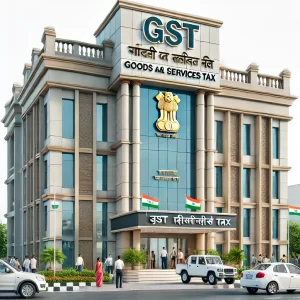
The Goods and Services Tax (GST) Act, 2017 is one of the most significant tax reforms in India’s
history, aimed at unifying the indirect tax structure across the country. Implemented on 1st July
2017, the GST Act replaced multiple indirect taxes such as VAT, service tax, excise duty, and other
state and central levies, creating a single tax system.
Key Features of the GST Act, 2017
1. One Nation, One Tax: GST replaced multiple indirect taxes, ensuring uniform taxation across
states and reducing the cascading effect of taxes.
2. Dual Structure: The GST model in India follows a dual structure, comprising Central GST (CGST)
and State GST (SGST) for intra-state transactions and Integrated GST (IGST) for inter-state
transactions.
3. Tax Slabs: GST is levied under different tax slabs: 5%, 12%, 18%, and 28%, depending on the
nature of goods and services.
4. Input Tax Credit (ITC): Businesses can claim ITC on taxes paid for inputs, reducing the overall tax
burden and preventing double taxation.
5. Simplified Compliance: GST introduced an online tax filing system through the GST Network
(GSTN), making compliance easier for businesses.
6. Composition Scheme: Small businesses with a turnover of up to Rs.1.5 crore can opt for the
Composition Scheme, paying taxes at a fixed rate with fewer compliances.
7. E-Way Bill System: The movement of goods above a specified value requires an e-way bill,
enhancing transparency and reducing tax evasion.
8. GST Returns Filing: Businesses are required to file regular GST returns such as GSTR-1,
GSTR-3B, and GSTR-9, ensuring transparency in tax collection.
Impact of GST on the Indian Economy
– Boost to Businesses: By eliminating multiple taxes, GST has reduced the cost of compliance for
businesses.
– Increased Transparency: With digitized tax records, GST has reduced tax evasion and increased
government revenue.
– Improved Logistics: The removal of checkposts and streamlined processes have improved the
efficiency of logistics and supply chains.
– Consumer Benefits: GST has reduced the overall tax burden on consumers by eliminating hidden
taxes.
Challenges and Future Prospects
– Compliance Burden: Small businesses often struggle with frequent return filings and compliance
requirements.
– Classification Issues: The categorization of certain goods and services under different tax slabs
has created confusion.
– Possible Reforms: Experts suggest further simplification of GST rates and an expanded tax base
to improve efficiency.
Conclusion
The GST Act, 2017, has revolutionized India’s taxation system by bringing uniformity and
transparency. While challenges remain, continuous reforms and technological advancements are
expected to enhance its efficiency. As businesses and consumers adapt, GST continues to shape
the economic landscape of the country.
Stay updated with our latest blogs on taxation, finance, and business regulations. For expert insights
and queries, feel free to connect with us!



